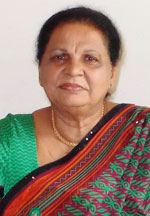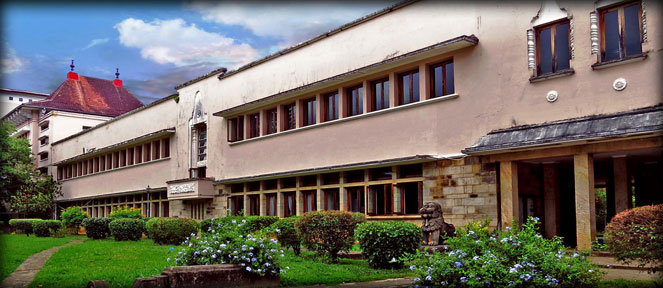|
Sri Lanka Federation of University Women turns 75:
A fillip for women's education and uplift
 The Diamond Jubilee of the Sri Lanka Federation of University Women (SLFUW)
falls this year and to celebrate the event a symposium on the title "The
Role of Women in Good Governance, Social Justice and Democracy" will be
held with the President Maithripala Sirisena in attendance at the BMICH
- Committee Room B on September 14. The Diamond Jubilee of the Sri Lanka Federation of University Women (SLFUW)
falls this year and to celebrate the event a symposium on the title "The
Role of Women in Good Governance, Social Justice and Democracy" will be
held with the President Maithripala Sirisena in attendance at the BMICH
- Committee Room B on September 14.
Way back in 1941, in the midst of World War II, when a handful of
inspired women met in a sitting room in Colombo and formed the Ceylon
Federation of University Women (later termed as Sri Lanka Federation of
University Women), they may not have imagined that the ideals they thus
formed will last for so long. This year, 75 years later, the legacy
continues.
What was rather strange about the birth of this organization was that
these members who spelt out the objectives towards the welfare of
University women had graduated from foreign Universities and had made
Sri Lanka their home. In fact, Ceylon did not even have a university at
that time. Clara Motwani, the founder member - an American by birth with
BA and MA degrees from American Universities had arrived with her
husband - an Indian theosophist and made Sri Lanka her home.
The rest, Doreen Wickremasinghe, Hilda Kularatne and MajorieWestrop
arrived here from Britain while Susan Pulimood arrived from India. The
only local founder member was Grace Paul from Jaffna who was also the
first Sri Lankan to become the President of the Federation from 1944-'46
and 1958-'59.
 It was in 1942 that the University of Ceylon was established
amalgamating the University College and the Medical College which were
up to then affiliated to the University of London. In 1942, out of the
904 students at the University of Ceylon, 91 were women which was 10.1%.
Thereafter, the percentage of the women student population gradually
grew till it reached 44.4% in 1970. In 1950, nearly 80% of students of
both sexes were from urban, affluent families. This ratio changed later
as students from the rural sector became dominant following the
Government takeover of schools and change of medium if instruction to
Sinhala and Tamil. It was in 1942 that the University of Ceylon was established
amalgamating the University College and the Medical College which were
up to then affiliated to the University of London. In 1942, out of the
904 students at the University of Ceylon, 91 were women which was 10.1%.
Thereafter, the percentage of the women student population gradually
grew till it reached 44.4% in 1970. In 1950, nearly 80% of students of
both sexes were from urban, affluent families. This ratio changed later
as students from the rural sector became dominant following the
Government takeover of schools and change of medium if instruction to
Sinhala and Tamil.
By early sixties, the membership of the Federation rose to over 600.
In the early days, women passing out from the Universities had been
largely teachers and educationists due to the lesser numbers of
establishments in the private sector and as the most noble and
respectable career for women was considered as the teaching profession.
The Federation accordingly expressed views on national matters and they
were in turn consulted on policy matters by the then Governments.
Federation Members even sat on bodies such as the University Court.
In 1944, the Federation, considered a vital pressure group by then,
submitted views and recommendations to the Kannangara Commission on
Education. By the end of the first decade, the SLFUW had grown to be
able to influence national problems especially in the field of
education.
Today, amidst turbulent times, the SLFUW had expanded counting around
5000 members some of whom the SLFUW lament are not sufficiently active.
The President Mrs. Seela Ebert points out that unlike in its early
stages, its services to University women are not confined to education
as they represent the Medical, Law, Science, Humanities, Administration,
Accountancy and many more fields. The SLFUW with its Branches in Kandy
and Jaffna continues to extend its services. Ebert says that the SLFUW
will open more branches and make the members more active.
The SLFUW has its own Resource and Training Centre at its Kithulwatte
Road premises in Colombo which is now a popular venue for vibrant
discussions. The SLFUW also holds lectures and workshops on issues which
are timely and relevant to University women. Its Hostel for University
Undergraduates at a nominal rent is part of its service projects. The
SLFUW which is active in many more fields thus continues a legacy begun
75 years ago by a band of far-thinking women. |

